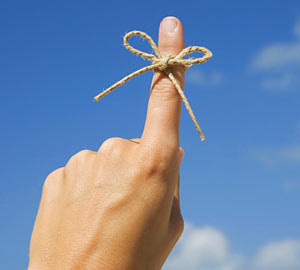
We have all been there. You were at a gathering and your cousin introduces you to her friend. By the time you are ready to leave and say good bye, you cannot remember the friend’s name. Was it Jane or Betty? Those are not even close, but either one could be right…
We all forget things, but as we get older, it can get harder to hold on to short-term memory items like a new acquaintance’s name or the items on your grocery list. The good news is there are simple tricks you can use to remember things in your everyday life.
Pair Words with PicturesThis technique is one of the most commonly mentioned ones. Words are abstract, used to represent other things, so they can be tricky to remember on their own. Pairing a word, like your cousin’s friend Liza name with a picture, like Queen Elizabeth, will help strengthen the connection later when you are trying to recall.
Gary Small, director of the University of California, Los Angeles Longevity Center suggests really paying attention to the name when it is first spoken. Often we cannot remember because we were not paying the closest attention in the beginning. Also repeat the name after the person says it.
Tell a Story
Not only do we remember pictures of things, but also we remember stories about things. If you have a list of items you need to remember, whether it’s a grocery list or a list of tasks you need to do, incorporate them into a story. This helps form connections between dissimilar items.
Develop a Template
With everything online these days, there are dozens of online passwords you create, and each one has different criteria: letters, numbers, uppercase, symbols, etc. Since you want to make them hard for others to figure out, how do you make them easy for you to remember? The trick is in creating a template that you can use for every site that doesn’t change, even though your password will. Here’s an example from AARP:
For instance, you might start with a word-number combo that’s meaningful to you — say, Binky11, the name of your first dog and your age when you got him. Tack on the initials or first two letters of the website that needs a password: FN for First National Bank, for instance. You’ll remember but a hacker will never guess.
Stick with a Routine
Just like the online template for passwords, developing a routine for organizing tangible items is another technique. Lose your keys? Designate a basket or hook by the door and make a habit out of putting them there.
Use Tools
Even when you follow the techniques above, there’s no guarantee you will be able to remember everything. It is okay to rely on some helpers. Calendars, to-do lists, and alarms can all be critical tools that help reinforce your memory. And with technological advances, you can access these helpers everywhere on your computer, tablet, and phone.

 1-800-916-0138
1-800-916-0138